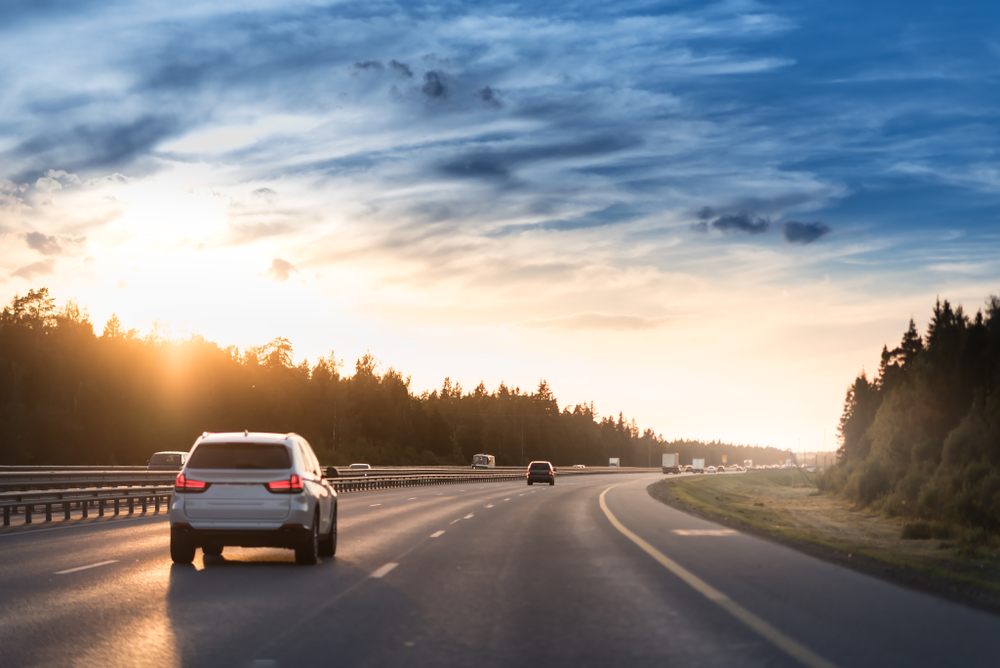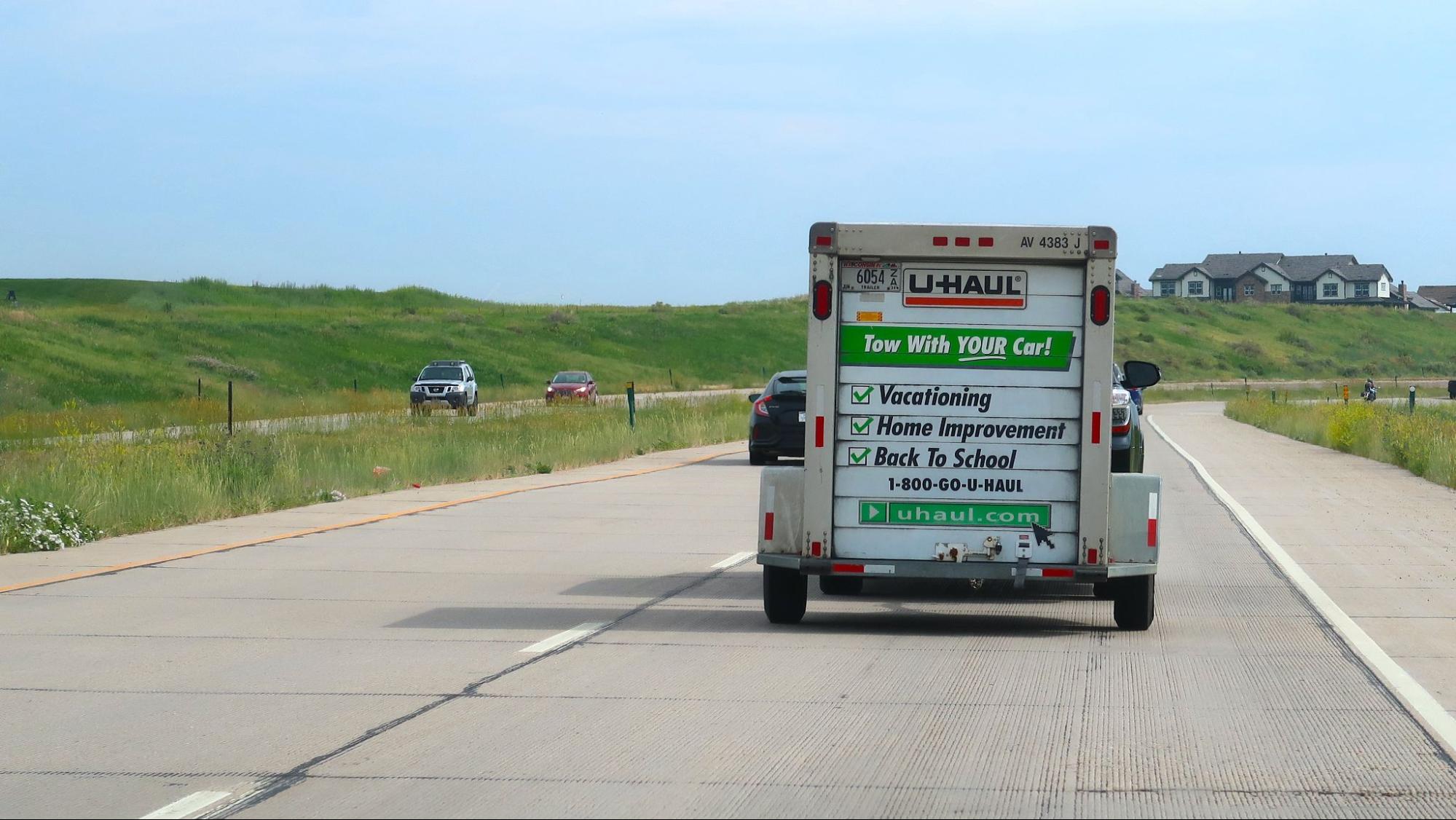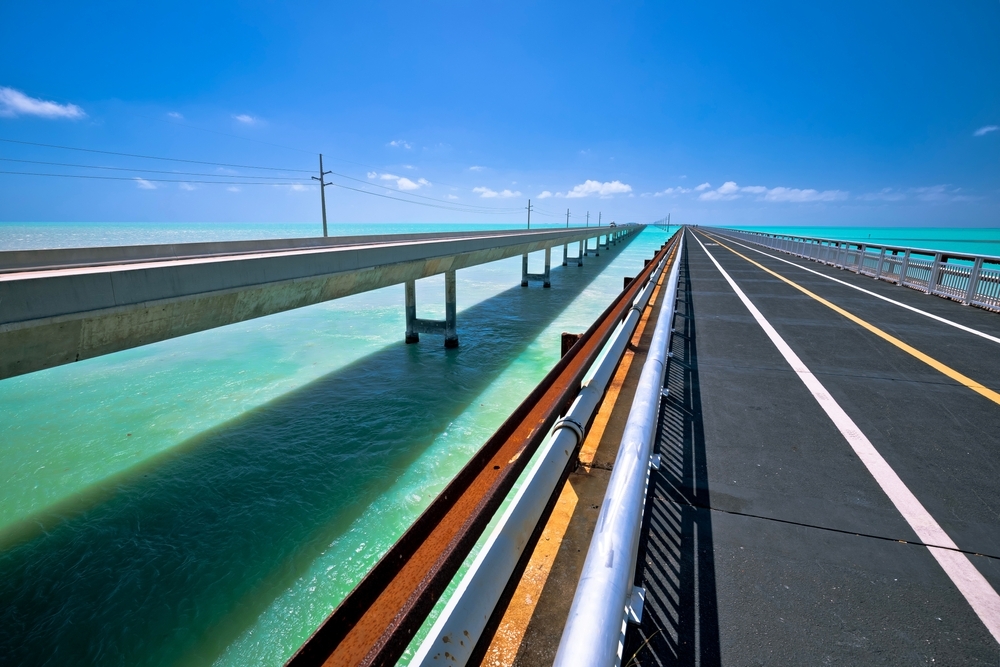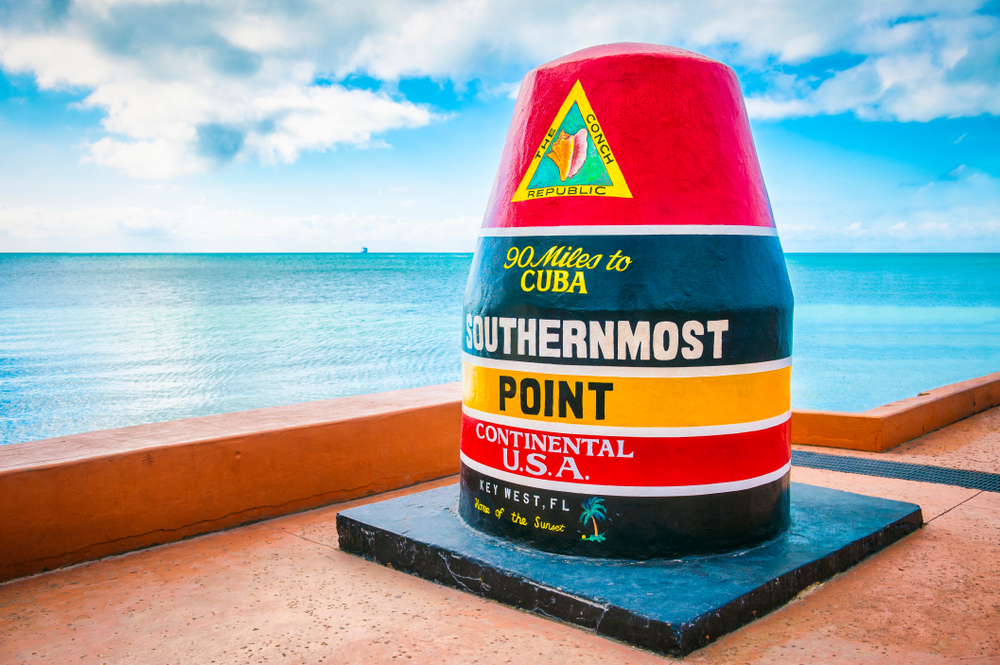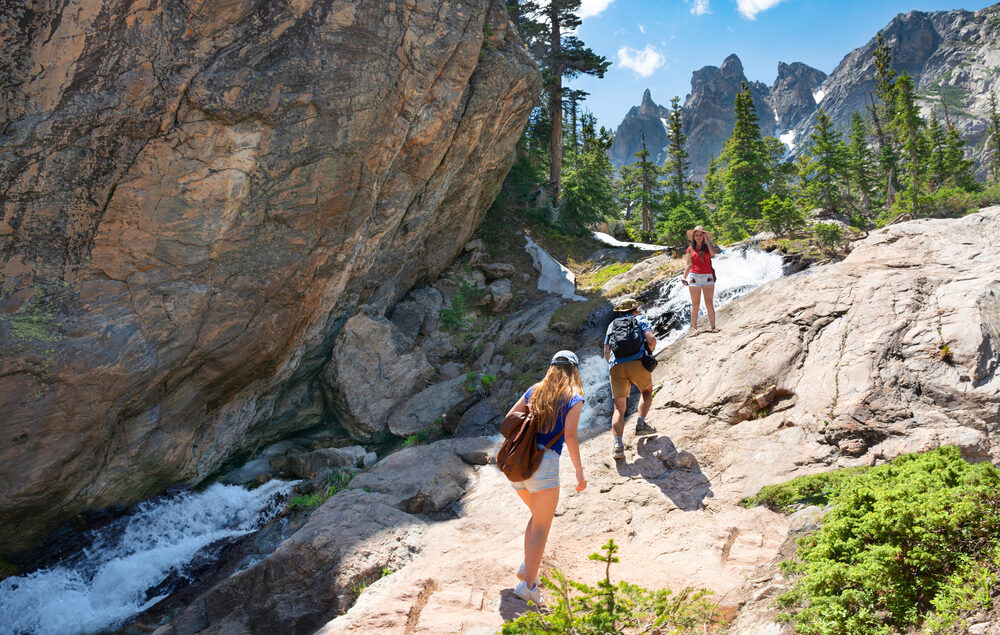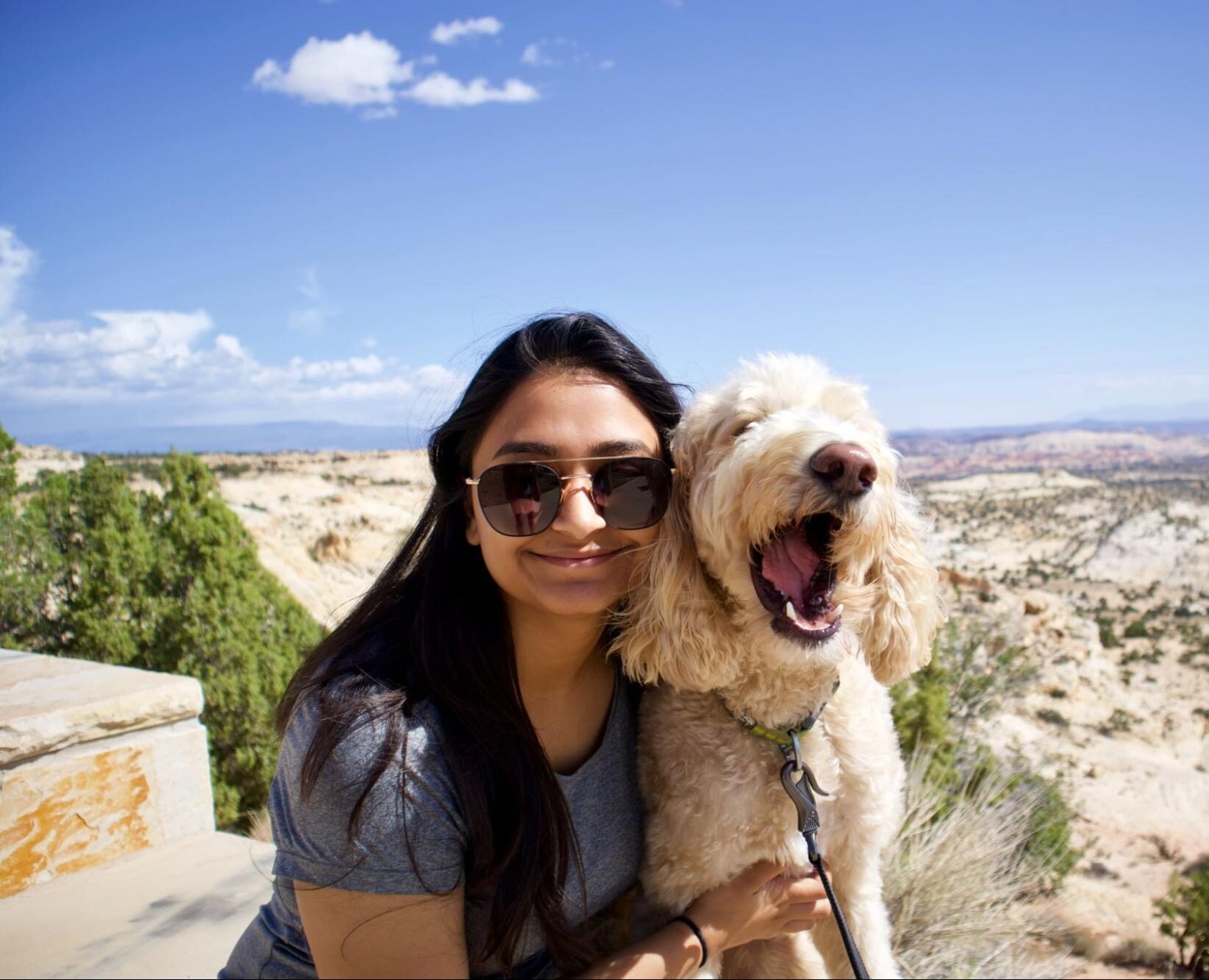
How to Take a Cross-Country Road Trip Across America
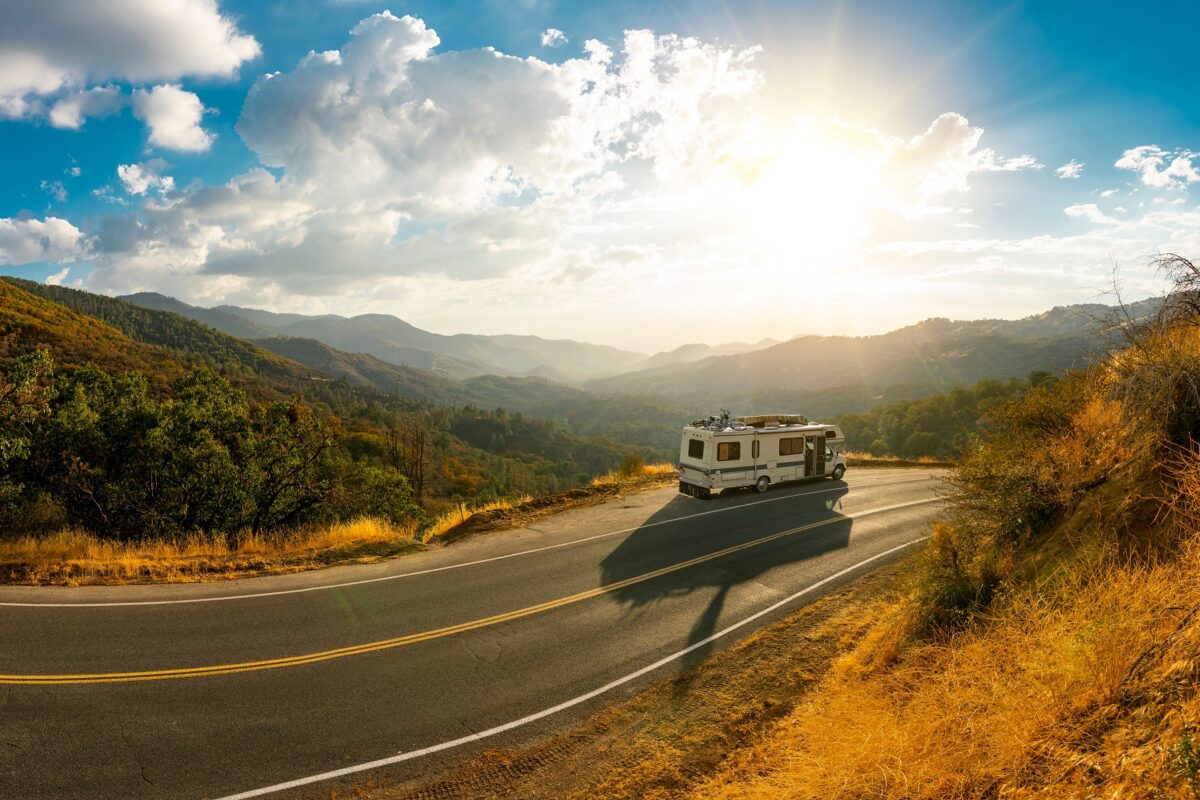
The awe-inspiring vastness of the open road, a crisp wind whipping at your hair through the open window, sights you’ve only dreamed of seeing—these are all quintessential pieces of a cross-country road trip. They aren’t, however, the only pieces.
Indeed, a road trip across America isn’t as simple as hopping behind the wheel and stepping on the gas. There are things to plan, things to bring, and things to do—and this guide will act as your copilot to all of it to help you explore all things cross-country road trip, including:
- How long does it take to drive cross-country?
- Common cross-country routes and can’t-miss sights
- Tips and tricks for a fun, stress-free cross-country drive
- The pros and cons of driving cross-country
- How to stay safe on the road ahead
Let’s get started!
How long does it take to drive cross-country?
The question of how long your cross-country trip will take depends on several factors—where you start and where you end, whether you plan to have extended stays, when you stop for gas, and which diners and drive-ins you’ll visit as you travel.
However, on average, the 2,500 to 3,500-mile journey from coast to coast should last approximately 45 hours.
Ideally, that doesn’t mean you’re gunning it in the hopes of traveling America in two days straight, but rather driving a few hours at a time with breaks. Eight hours a day is more than doable (especially if you have driving partners), meaning you’ll realistically spread out those 45 hours over a six-day drive.
For the more ambitious road trippers out there—those with the time and the patience for longer, more spread-out travel—it’s possible to hit every state in the contiguous U.S. in about three months.
Every cross-country road trip is different, so perhaps the most important thing to remember is flexibility. Of course, not every vacation lasts forever, but setting aside a good two weeks (with maybe a day or two of buffer) should be more than enough time to make it to one coast and back again.
Common cross-country routes and can’t-miss sights for road trips
The U.S. is the fourth-largest country in the world by area, so it should come as no surprise that there are many roads to take across America (a fact that Robert Frost would have a field day with).
Your route of choice will predominately depend on what you want to see along the way—and, in the case of US-2, aka the “Great Northern,” the time of year.
1. The Great Northern
Situated along the northernmost periphery of the country, the Great Northern is a cross-country road trip route best taken in spring or summer. Otherwise, you’ll have to contend with freezing temperatures and brutal winter storms.
At over 3,500 miles (or 51 to 53 hours) it’s the lengthiest route, although the lack of big cities along the route means very little of that time will be spent in traffic. It also passes through Canada, so have your passport ready.
Some must-see attractions on the Great Northern include:
- Glacier National Park, Montana: Featuring the titular blocks of ice for which it’s named, this American gem is also studded with majestic mountains and pristine lakes where you can stop to have a mid-drive picnic.
- Apostle Islands National Lakeshore, Wisconsin: From ice caves to rock formations straight out of a Roger Dean painting, this is one of the most variable landscapes you’ll see throughout your trip. You can set sail on Lake Superior or opt to hike one of the 21 islands in the area.
- Montréal, Québec: If you’re going to pick a place to stop in Canada, Montréal should be your go-to. It’s a French city in the Great White North, so expect to hear the language of love while you’re there. Wind down from a long day on the road with a visit to Strøm Nordic Spa, where you can immerse yourself in the thermal outdoor baths. Or, head southwest to sit within nature at Parc Angrignon, a 97-hectare greenspace that offers walking trails, gardens, and a zoo.
2. Staying south
If you’d rather flip the script and stick to the south, US-80 (plus a few interstate highways) is the route for you. Everything’s different down there, from high temperatures to the sheer variety of food available.
The total distance ranges from 2,500 to 3,000 miles depending on your starting and ending points (travelers usually start in Florida/Georgia and arrive in southern California), as well as how close you drive to the Gulf Coast, making for anywhere between 35 to 42 hours in your car.
As you travel along the southern route, don’t miss these sights and attractions along the way:
- Tombstone, Arizona: As the site of the infamous O.K. Corral gunfight, this Arizona town is as Wild West as it gets. Tumble out of your car, stretch your legs, and enjoy a change of pace on a stagecoach and dine at its many parlors and saloons for a taste of home-style BBQ.
- South Padre Island, Texas: Although this locale is a bit out of the way, this Gulf Coast island has more than just beautiful beaches. It’s a premier place for birdwatching, dolphin sighting, and even the occasional SpaceX launch.
- Selma to Montgomery National Historic Trail, Alabama: Experience 54 miles of Civil Rights history along this commemorative stretch of Alabama road. There’s no shortage of historically significant cities, churches, and even bridges to visit as you travel this route.
3. Meeting in the middle
Leading from boardwalk-lined Ocean City, Maryland, to the golden gates of San Francisco, California, US-50 is better known as the Loneliest Road in America due to the abundance of open space that surrounds it.
Its vast, secluded stretches of road can wear down even the hardiest driver, so be sure to take a break when you need to. Coming to around 3,000 miles, the trip averages out at 40 hours, but there’s actually a lot to see and do—more than its name would imply, at least.
These sights will keep you company on the Loneliest Road, even if you need to make detours to see them. We recommend checking out these destinations along your trip:
- Maroon Bells, Colorado: Mountains don’t get more distinctive than the Maroon Bells, a pair of peaks in the Rockies that overlook a lake surrounded by colorful flowers. Keep your cameras out, as you’ll want to capture this area’s sprawling landscape and sparkling lakes. This hiking area is only 11 miles from Aspen, where you can walk Main Street and dine at a selection of high-end eateries like Mawa’s Kitchen for gourmet bites and Plato’s Restaurant, located on the Aspen Institute Campus.
- Garden of Eden, Kansas: This concrete statue garden puts more than one strange twist on sculpting. It’s not quite folk, and it’s not quite modern—it just…is. Take a self-guided tour throughout the grounds to feast your eyes on reimaginings of the Devil, Cain and Abel, and the crucifixion. There’s also a stone log mausoleum.
- Marengo Cave, Indiana: The confines of Marengo Cave mark a significant change from the sun-exposed Loneliest Road—and an adventurous one, at that! Spelunk between stalactites and stalagmites on a guided tour. You can even spend a night in one of the caves, where visitors can camp underground and mine for gemstones.
Tips and tricks for a fun, stress-free drive
The idea of the open road—propelled solely by your love of adventure—is an idyllic one. And if you plan and prepare properly, it’s sure to be just that.
To that end, traveling across the country is still a monumental undertaking, and it’s important to map out more than just your route before hitting the road. As such, here are some pointers to keep your cross-country journey on track:
1. Plan and prepare for the road
Unforeseeable events and mishaps are sure to bump you off-course, from scenic byway detours to tire-change misadventures. That’s why a little preparation goes a long way:
- Even if you are traveling in a campervan, use online tools to identify gas stations, find cheap lodging, and map your exact route from start to finish.
- Plan your pit stops in advance, whether it’s the Hollow Mountain gas station in Utah that’s carved into the area’s red rock, a restaurant that appeals to your dietary restrictions, or bathrooms with positive online reviews.
- Download your itinerary so that you can access it offline, or print it out to have it on hand in the event of an emergency or dead phone.
- Make sure your vehicle is in cross-country condition by taking it in for maintenance before the trip, giving it a thorough clean, and stowing essential tools, such as an air compressor, cordless impact wrench, and compact jump pack in the trunk. Additionally, store your luggage thoughtfully in your car to reduce clutter. You’ll be in it for days, so you don’t want to feel cramped.
2. Know your food and entertainment options
Experiencing roadside diners and new cuisines is one of the great joys of traveling the U.S., but don’t neglect snacks (and water) for the car. Some healthy on-the-road options to keep in your vehicle include:
- Hard-boiled eggs
- Hummus and your favorite dippable snack (carrots, pretzels, etc.)
- Chickpeas baked with oil and your favorite spices
- Homemade trail mix
- Seeds and nuts
Staying full is only half the battle, though: You’ll need to fight off boredom as well, especially on roads that seem endless. A few ideas to keep you alert even during your last eight-hour stretch include:
- Good company
- Curated playlists, audiobooks, or podcasts
- Ridealong games, whether that’s magnetic board games for passengers or a revealing round of “Would You Rather?” that the driver can join
The pros and cons of driving cross-country
Taking to the open road is a valuable experience, but no amount of planning will mitigate the inevitable roadblocks you may encounter along the way. As such, be aware of the pros and cons of driving cross-country before you start your engine to prepare yourself for what lies ahead:
Pros of driving cross-country
There are lots to love about crossing the country by car, including:
- Multi-vacation: Regardless of your route, you’re going to see a lot of America throughout your road trip. In that way, it’s like you’re taking multiple vacations at once. And, places that particularly appeal to you can always be revisited for a more leisurely vacation.
- The more, the merrier: Road trips aren’t free, but traveling companions can help lighten the load on your wallet. Plus, if you’re renting a trailer, you could potentially save on overnight-stay costs (assuming you have more than four people).
- Ultimate flexibility: While adhering to your gas station and overnight itinerary (as well as time restraints) is well-advised, you’re otherwise free to do as you will. See something interesting along your road trip and have the time? Check it out. Is something that you were interested in not as interesting as you thought? Drive on.
Cons of driving your cross-country road trip
For every upside of a road trip, there’s a downside:
- Vacation… right?: You have to plan your itinerary for any vacation, but perhaps not as extensively as you do for a road trip. Some services can help with that, but you still have to drive, make on-the-spot choices, and balance detours with the time you have, which can take a lot of brainpower.
- Things happen: Flat tires, car trouble, unexpected diversions, freak weather—sometimes, things just happen, and your reaction determines the way forward. Even things you fully expect as you travel, like fatigue, must be dealt with and planned around.
- Road trip costs add up: Setting a budget and planning ahead can help alleviate this, but you might find yourself spending more than expected. Tolls, parking fees (never mind finding a spot), and that hidden gem of a restaurant you spied from afar all make a dent.
Staying safe on the road ahead
It’s time to address the elephant in the room: Taking a road trip during the COVID-19 pandemic.
Travel restrictions are lifting little by little, but it’s still best to err on the side of caution. Sights you want to see might be closed down, and different states, counties, and cities have their own rules to follow.
To that end, keeping the following precautions in mind can help streamline your road trip:
- Bring extra masks, COVID-19 tests, vaccination cards, and identification with you
- Stay contactless when possible and wash your hands wherever you go
- Have backup plans in case your route doesn’t work out, and be sure to research the restrictions of your new destination
- Stow emergency supplies (first-aid kit, extra water, thermometer, etc.) in your car
- Rest however often you need to to keep your immune system healthy and strong
Landing: Your cost-to-coast rental network
You’re all packed for your road trip, your tank is full, and you’ve obsessed over the roadmap so much it’s been emblazoned in your mind’s eye. That’s all well and good, but you still have some lingering questions, don’t you? Well, Landing has the answers—especially when it comes to where you should go next.
Our membership-based network provides flexible-lease and fully furnished apartments in over 375 cities across the country. You can reserve an apartment 100% online and won’t have to worry about paying an additional month’s rent upfront, security deposits, or even application fees. Pet-friendly options are just the icing on top. Speak with our 24/7 member experience team today, and find an apartment worth braving a cross-country drive for.

